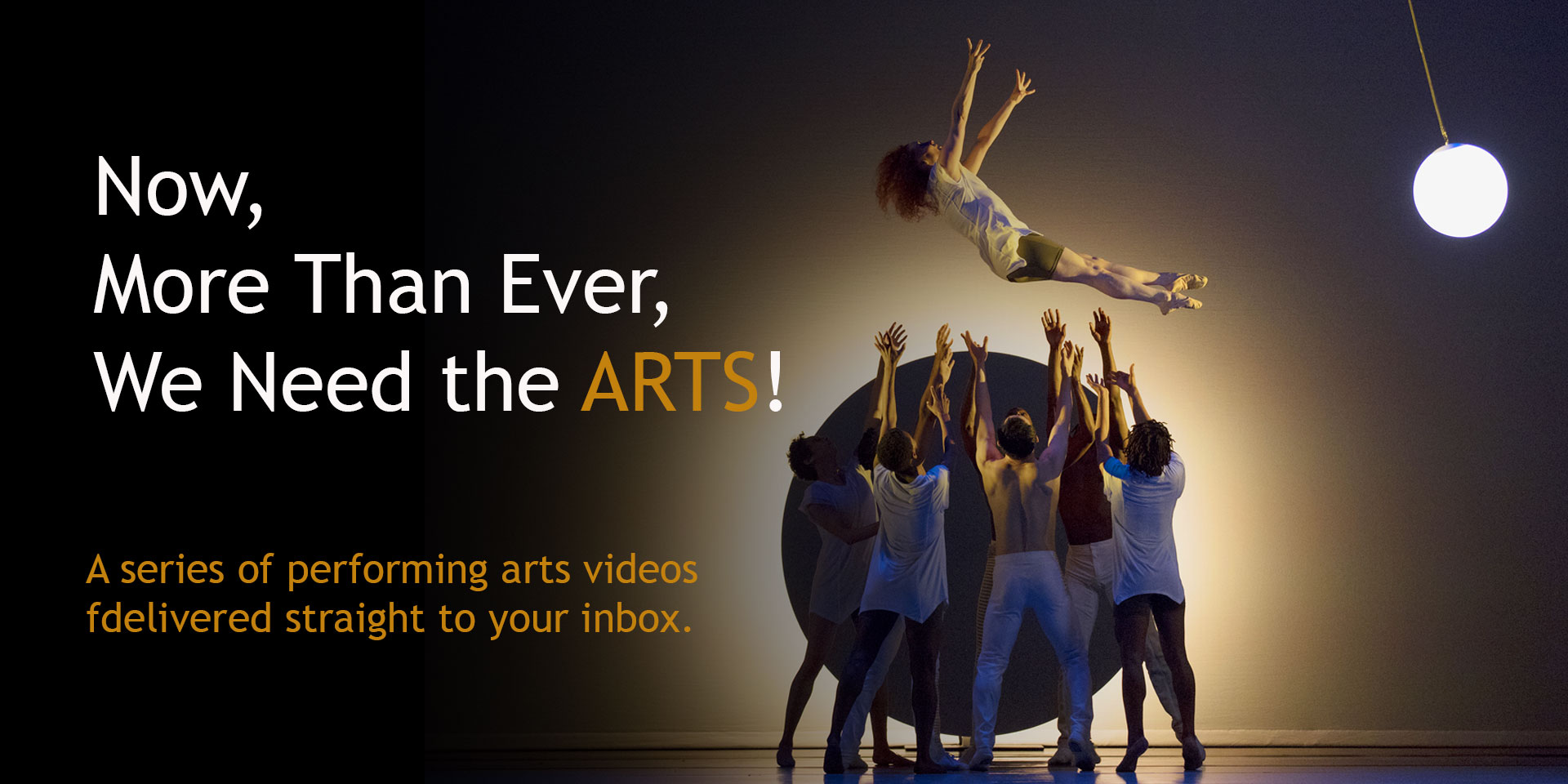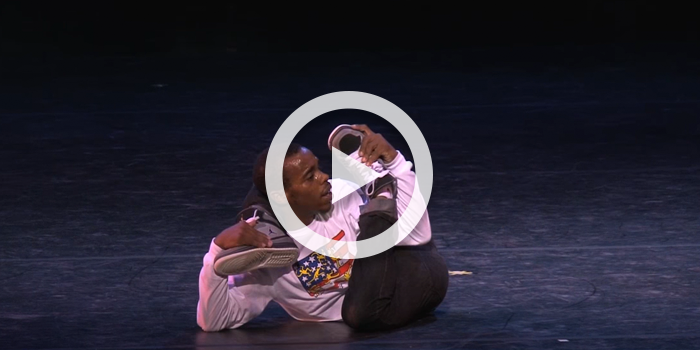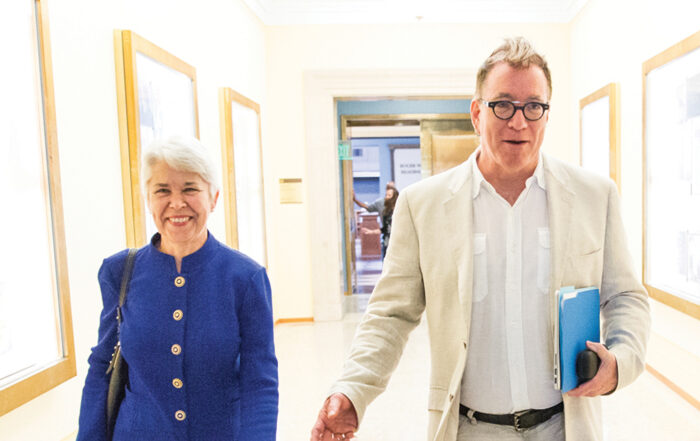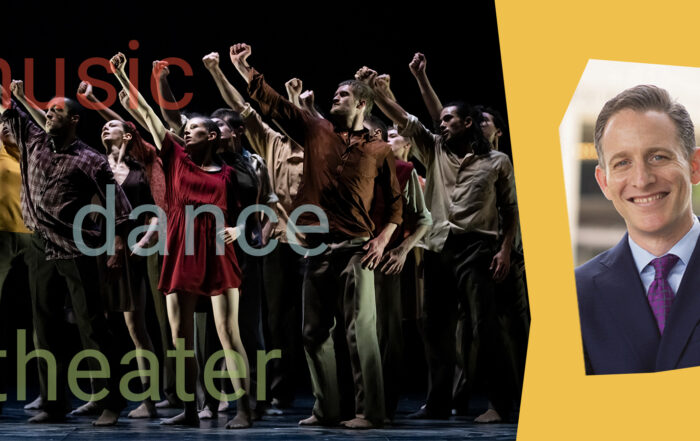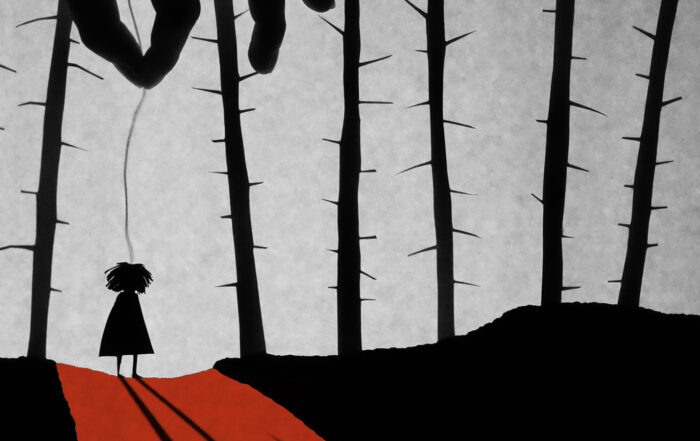In this issue: Jake Shimabukuro’s ukulele cover of Queen’s Bohemian Rhapsody; soprano Leontyne Price, soprano and bass-baritone Simon Estes performing Aida and Amonasro’s Duet from Aida; choreographer Camille A. Brown’s “The History of African American Social Dance”; soprano Margaret Price performing Mozart’s “E Susanna non vien! … Dove sono” from Le nozze di Figaro; Silkroad Ensemble performing Kinan Azmeh’s “Wedding”; Music from Cinema Paradiso by composer Ennio Morricone
Now, More Than Ever: Issue 24
In today’s Now, More Than Ever we pay tribute to “opera’s two Prices” and juxtapose work by dancer/choreographer Camille A. Brown and Syrian American clarinetist/composer Kinan Azmeh. We start with a highly original cover of Queen’s “Bohemian Rhapsody” and conclude with an affectionate farewell to Ennio Morricone, the prolific composer whose music has enriched our lives for more than a half-century.
Freddie Mercury/Queen: “Bohemian Rhapsody”
Jake Shimabukuro, ukulele
Even the most diehard Queen fan will admit that there’s something truly amazing about ukulele virtuoso Jake Shimabukuro’s bravura rendition of “Bohemian Rhapsody.” Born in Hawaii and also a fine composer, Shimabukuro has divided his time between Japan and the US, and he’s easily one of the brightest stars in the ukulele universe. This performance is absolutely packed with joy, wit, and charm, providing one of those instances when you find yourself saying, “I had no idea that instrument could do that!”
Verdi: Nile Scene. Aida and Amonasro’s Duet from Aida
Leontyne Price, soprano
Simon Estes, bass-baritone
Metropolitan Opera Orchestra
James Levine, conductor
Here’s an excellent opportunity to revisit the legendary Leontyne Price’s final performance at the Met (in 1985, at the age of 58)—as well as her farewell to staged opera—as the Nubian princess Aida, the role that helped make her an international star. (Price’s fabled career actually includes triumphs at both the “new” and “old” Metropolitan Opera houses, where she appeared as Verdi’s great heroine for nearly 25 years.
In this critical scene, Aida, who has been taken captive and forced to serve at the feet of pharaoh’s daughter (also her rival for the love of Radamès, the Captain of the Guard), is confronted by her father, who demands that she help guarantee Nubian victory by convincing Radamès to reveal Egypt’s military battle plans. The relationships that Verdi creates between fathers and daughter are often immensely complex, and here we witness Amonasro’s manipulation of his daughter as he presents her with an impossible choice between love and country. Watch Price’s transformation over the course of this scene, especially in the middle, when Amonasro paints a horrific picture of what awaits should Aida fail—all accompanied by a terrifying orchestral roar that only Verdi could conjure.
Price was always a towering figure, and it’s wonderful to see her ending her operatic career in such fine form. Those with an interest in her work, as well as the history of the Met, would do well to seek out the excellent documentary The Opera House, featuring an extensive interview with the soprano that reveals her as warm, charming, tough, and magisterial.
A few side notes: Price, a product of the Jim Crow South, hailed from Laurel, Mississippi. Her international fame—among other distinctions, she was the first African American leading performer at the Met—helped pave the way for other exceptional Black artists, including Simon Estes, her younger colleague and her Amonasro for this performance. Here, Estes is an impressive collaborator: regal, intimidating, commanding.
“The History of African American Social Dance”
Camille A. Brown, choreographer, educator, and TED Fellow
A slight departure here, with something that’s not exactly a performance video, but rather a condensed history of African American social dance, as joyful as it is informative. Camille A. Brown is one of the busiest dance makers out there at the moment, working with her own company and choreographing major Broadway shows as well as the dance sequences in the recent Met production of Porgy and Bess. Here she excels in transmitting a non-didactic, thoroughly entertaining message that’s not simply an artistic one, but also a brilliantly put-together summarization of dance’s ability to create community and reinforce bonds.
Brown introduces us to an entire vocabulary of dance, much of which was new to me, as she guides us through history and underscores the importance of dance as a vital part of African American identity. Through it all, she’s out there dancing herself. I’d be tempted to say that she “walks the walk,” but what she really does is “dance the dance.”
Mozart: “E Susanna non vien! … Dove sono” from Le nozze di Figaro
Margaret Price, soprano
NDR Symphonie Orchester
Christoph Eschenbach, conductor
There was a time in the 1970s and 1980s when two “Prices” (Leontyne and Margaret) reigned supreme in the world of opera. Both were more than familiar to Bay Area audiences, and Margaret Price actually made her American opera debut at San Francisco Opera, as Pamina in Mozart’s The Magic Flute; she mainly restricted her repertoire to Mozart and lighter lyric Verdi roles (although she also made a fine Aida), and she was perhaps best known as the Countess in The Marriage of Figaro. Her agent once said to me, “Margaret Price is one of the few singers who can convince you that ‘Dove sono’ is sad.” I think he’s right. We often hear it, in C major, as serenely beautiful, but at heart the aria is about a woman looking back at a marriage she no longer recognizes. There’s true heartache here, and behind Price’s sheer vocal beauty lurks the shadow of tragedy.
When she retired, Price stopped singing completely, retreating to raise golden retrievers in her native Wales. Her greatest love was in the lieder repertoire, and she did some of her finest work in that field, which I look forward to exploring in upcoming issues of Now, More Than Ever.
Let me leave you with another wonderful video of Price singing “Dove sono” in Golden Gate Park, with conductor Kurt Herbert Adler and the San Francisco Opera Orchestra. I expect that for more than a few of you, this will call up fond memories.
Kinan Azmeh: “Wedding”
Silkroad Ensemble
I think of this knockout Silkroad performance as a worthy companion to Camille A. Brown’s compendium of African American social dance in that each video features both astonishing solo performances and brilliant ensemble work, all in the service of communicating deeply and completely—and without ever saying a word.
Syrian American clarinetist and composer Kinan Azmeh is powerfully impressive here, as are sheng player and vocalist Wu Tong and Galician bagpipe virtuoso Cristina Pato. The participation of the young Silkroad global fellows transforms the festivities into a rich and memorable musical dialogue.
Ennio Morricone
Music from Cinema Paradiso
Ennio Morricone died this week at the age of 91. The legendary Italian composer, orchestrator, and conductor wrote more than 400 scores for film and television (as well as more than 100 classical works), including his highly influential music for The Good, the Bad, and the Ugly. A particular favorite of mine is his heart-stoppingly beautiful “Gabriel’s Oboe” from The Mission. But I’d like to leave you with Morricone’s glorious score from Cinema Paradiso, music that never fails to bring tears to my eyes. Rest in peace, maestro!
Now, More Than Ever Full Playlist
Now, More Than Ever Spotify Playlist


